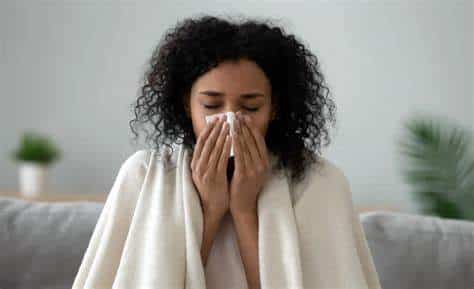Coughing or congested? How can you know if you have COVID-19, the common cold, or pollution?
Having cold this winter, how can we tell if it is just a common cold, Covid-19 or any other thing, let’s find out;

Is your cough cold or Covid symptom?
It is that time of year again, when respiratory illnesses like the flu, the common cold, allergies, and others start to affect people’s health. And to make matters worse, COVID is still a threat to us. People in big cities still have to deal with pollution and the issues that come along with it, which only makes things worse.
That said, how do we distinguish between the symptoms of each, particularly when it comes to coughing or experiencing congestion, at a time when the pandemic is still active, common cold cases are rising, and pollution is contaminating the air?
Why cold occurs in the first place?
When your throat or airways are irritated, you will cough in response. When mucus, bacteria, or dust tickle or irritate the throat and airways, it is a natural reflex to cough.
When nasal and surrounding tissues and blood vessels swell due to an excess of fluid, congestion occurs. A stuffy feeling may result from this, which is frequently a sign of allergies as well as diseases like the cold, flu, or sinusitis. Pollution, or when air pollutants produce swelling, oedema, swelling, and blocked sinuses, is another cause.

How to know if it is a regular cold?
Covid or the flu are more dangerous than a typical cold. But discomfort can still result from it.
Two of the most prevalent signs of a cold are a runny nose and nasal congestion (stuffy nose). However, it could also result in other symptoms like a headache, sore throat, or cough.
The normal incubation period for the common cold is one to three days, and the majority of people recover from it in seven to ten days.
Can Pollution be the problem
Coughing and congestion are two urgent health issues that can be brought on by poor air quality or high air pollution levels. While it is neither contagious nor virus-caused, unlike COVID, colds and flu, it is nonetheless widespread. Air pollution can also cause many additional symptoms, such as eye infections, headaches, colds, and runny nose, in addition to coughing and nasal congestion. When PM (Particulate Matter), a type of pollution, accumulates in the respiratory tract and mucous membranes, this occurs.
Precautions to take
A properly fitted mask can assist in reducing the risk of lung damage and respiratory infections.
Wearing a high-quality face mask helps reduce exposure to polluting agents, viruses, and allergies, as well as COVID, the common cold, the flu, and air pollution.
In addition to donning a decent mask, practise excellent cleanliness. Keep your distance from someone exhibiting cold-like symptoms, wash your hands after touching anything that is regularly touched, and, most importantly, eat immune-boosting, lung-friendly meals to ward off pollutants and viruses.













